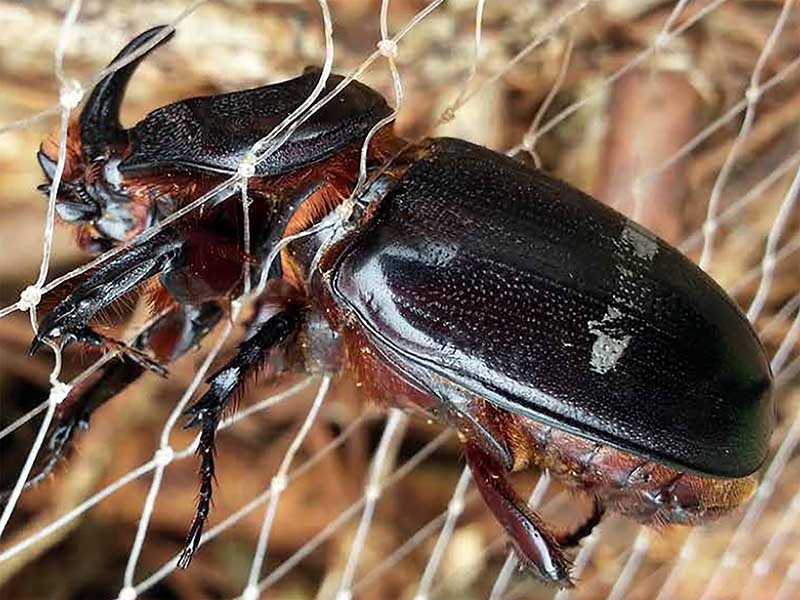UOG-developed rhino beetle traps win Guam golf course an innovative conservation award
UOG-developed rhino beetle traps win Guam golf course an innovative conservation award
UOG-developed rhino beetle traps win Guam golf course an innovative conservation award
11/29/2022

The tekken netting technique for trapping coconut rhinoceros beetles developed by University of Guam Cooperative Extension & Outreach has earned a Guam golf course an award for innovative conservation.
Russell F. Young, superintendent of Palm Tree Golf Course on Andersen Air Force Base, was one of four recipients to receive a 2022 Environmental Leaders in Golf Award on Oct. 27 from the Golf Course Superintendents Association of America for his success in using the technique.
“We had a problem where we were losing palm trees like crazy,” Young said.
The coconut rhinoceros beetle, an invasive species in Guam, has decimated coconut palms island-wide. The adult beetles bore into the crowns of coconut palms to feed on sap. The Andersen golf course has lost around 300 palms to date.

Quitugua and Moore got the idea of using netting to trap the beetles from the Hawaii Department of Agriculture in Hawaii in 2014, shortly after the beetle was discovered in Oahu. They were using bird netting, designed to keep birds out of gardens, to catch the beetles entering and leaving a large pile of dead coconut material, where they mate and lay eggs.
“We did observations and took data there,” Quitugua said. “There were a lot of beetles coming out of the green waste, and the netting was trapping some, but not all. When we got back to Guam, we tested a number of other types of netting.”

They found the tekken netting had the best size of spacing between the filament, resulting in a 70% capture rate. Ideally, it was also affordable and easy-to-use.
“We’ve caught thousands using that method,” Young said, estimating they’ve caught a total of 6,000 beetles over the past six years, which has effectively slowed their spread.
UOG extension agents are now assisting the golf course with planting ironwood trees in place of the palm trees, with 250 planted so far.
 |
| Download |
How to trap rhino beetles
For residents and businesses wanting to protect their coconut palms and control the spread of the rhino beetle on their properties, tekken netting can be purchased at Guam Home Center in Dededo. They can also reference the “Trapping Methods” brochure published by University of Guam Cooperative Extension & Outreach or contact:
UOG Cooperative Extension & Outreach, Agriculture & Natural Resources
(671) 735-2080
Dr. Aubrey Moore: aubreymoore@triton.uog.edu
Roland Quitugua: quituguarj@triton.uog.edu



